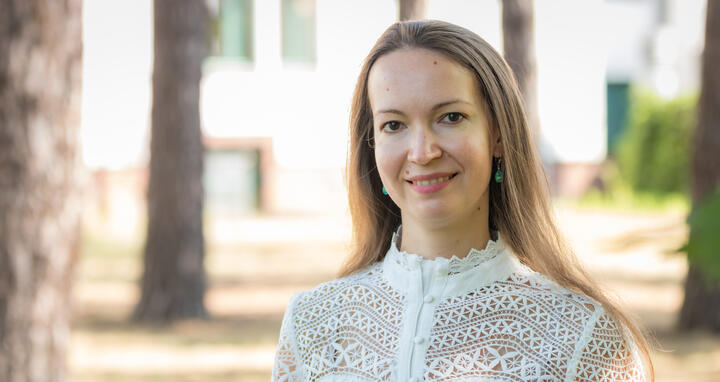Cells gone astray
Only differentiation allows our bodies to develop different tissues and organs.
Specialization – professional and otherwise – means focusing one’s energy and abilities. The same goes for the cells in our bodies. Initially, identical cells specialize in order to reliably fulfill specific functions – a process biologists like Dr. Daria Bunina call “differentiation.” From then on, the cell’s identity is set; it can only be an immune cell, a liver cell, a red blood cell, and so on. “Only differentiation allows our bodies to develop different tissues and organs,” Bunina explains. The 32-year-old Russian moved from the European Molecular Biology Laboratory (EMBL) in Heidelberg to the Berlin Center for Translational Vascular Biomedicine (VasBioBerlin) VasBioBerlin, a scientific network of researchers from the Berlin Institute of Health at Charité (BIH), Charité – Universitätsmedizin Berlin, and the Max Delbrück Center for Molecular Medicine in the Helmholtz Association (MDC). At the MDC she is now setting up the “Systems biology of cardiovascular and neuronal pathologies” lab to study how errors in cell differentiation cause diseases.
The key to differentiation is DNA and its 23,000 genes. In principle, DNA is identical in all cells in the body. In order for different cell types to develop from it, the right genes have to be activated at the right time. Between 50,000 and 100,000 genetic switches in the genome are responsible for making that happen. However, they are not accessible all the time. This is because the DNA molecule is folded and wrapped around proteins called histones. This is the only way the two-meter strand of DNA can fit into the cell nucleus, which on average has a diameter of about 0.01 millimeters.

Making genetic switches accessible
“Histones and DNA make up the physiological form of our genome – chromatin,” Bunina says. These proteins can change the three-dimensional structure of chromatin so much that certain switches become accessible and others get blocked. In this way, individual genes in DNA can be deliberately activated or deactivated. “This epigenetic regulation makes it possible to control differentiation, including the various developmental stages of cells,” explains Bunina, whose own professional specialization began 15 years ago when she started studying biochemistry in Moscow. Even as a child she liked chemistry, although the subject was “a bit too far removed from life.” Hence the combination with biology. For her PhD at the Center for Molecular Biology (ZMBH) of Heidelberg University, the biochemist ultimately focused on gene regulation – and her specialization was established.
Histones and DNA make up the physiological form of our genome – chromatin.
At the MDC, Bunina now intends to investigate the molecular foundations of epigenetic regulation. She is particularly interested in how errors in this process can lead to cardiovascular and neurodevelopmental disorders. In its search for answers to this question, her team will use various bulk and single-cell omics technologies in order to systematically study the regulation of the human genome. The comprehensive data will be analyzed using novel computational methods to do such things as decode regulatory gene networks and identify molecular pathways that are impaired in certain diseases. Bunina’s research will be informed by the vast knowledge of bioinformatics that she acquired during her six years as a postdoc at the EMBL in Heidelberg. “Other people had to analyze the data from my doctoral thesis for me,” she says. That was a frustrating experience, one that motivated the ambitious researcher to acquaint herself with data science techniques after she finished her PhD.
Developing diagnostic tools and treatments
In addition, the team intends to test their results in the lab using a human stem cell model system. For Bunina, the ultimate goal is to develop clinical applications from the team’s research. One possibility is genetic biomarkers for use in diagnosis. Another is medications that keep differentiation from going awry and cells from going astray.
Bunina was drawn to Berlin by the MDC’s great facilities and equipment, its close cooperation with clinicians, and the numerous opportunities for collaborative research. Of course, she is also eager to explore the capital in her free time. After eleven years in the rather tranquil setting of Heidelberg, she misses the culture, the music, and the culinary offerings of a big city. And after an intense search, she and her partner are happy to have finally found an apartment. Now she can concentrate fully on setting up her first laboratory. She can hardly wait to get started with the first experiments.
Text: Janosch Deeg
Further information






